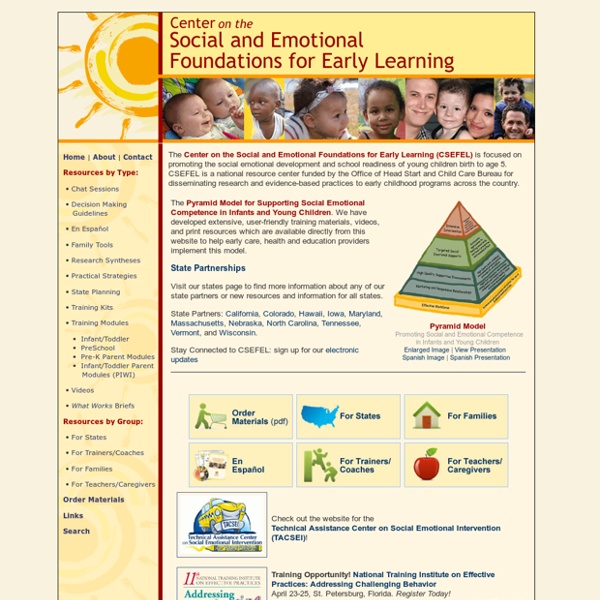CSEFEL: Center on the Social and Emotional Foundations for Early Learning

TACSEI
TACSEI
What are the Teaching Tools? Creating Teaching Tools for Young Children with Challenging Behavior is a FREE product developed by the Technical Assistance Center on Social Emotional Intervention for Young Children (TACSEI) that gives teachers practical strategies, developed from TACSEI’s research activities and experiences in Positive Behavior Support, to create a plan to support young children who are having challenging behavior. There are two versions of the The Teaching Tools provide: easily accessible ideas and materials such as handouts, worksheets, techniques, strategies, and visuals to support children in the classroom and other learning environments ideas of effective intervention approaches for children who do not need a functional assessment to determine the function of the child’s problem behavior or a team-based process to address persistent challenging behavior. These materials were designed for reproduction and may be reproduced for educational purposes. Teaching Tools Flyer
Home | Pyramid Plus: The Colorado Center for Social Emotional Competence and Inclusion
Related:
Related:



